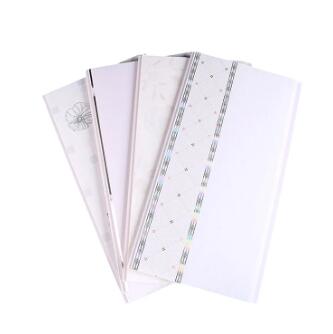Is Plastic Flooring UV-Resistant for Outdoor Use
2024-09-07
Plastic flooring has gained popularity in both residential and commercial spaces for its durability, affordability, and low-maintenance qualities. However, one common concern among consumers is whether plastic flooring can withstand prolonged exposure to direct sunlight, particularly when used outdoors or in sun-filled rooms. The question arises: Is plastic flooring UV-resistant, and how does it perform in areas with constant sunlight exposure?
1. What Is UV Resistance in Flooring?
UV (ultraviolet) resistance refers to a material’s ability to withstand the damaging effects of sunlight, which can degrade materials over time. When exposed to direct UV rays, many types of flooring materials – including plastic – can suffer from discoloration, warping, or cracking. UV-resistant flooring is specially formulated to counteract these effects, maintaining its appearance and structural integrity even when subjected to prolonged sunlight.
2. Types of Plastic Flooring and UV Resistance
Different types of plastic flooring offer varying degrees of UV resistance, depending on the specific material and the additives used in the manufacturing process.
- Vinyl Flooring: Vinyl, one of the most common plastic flooring options, is durable and water-resistant, making it a popular choice for many settings. However, standard vinyl flooring is not naturally UV-resistant, and prolonged exposure to direct sunlight can cause it to fade or discolor over time. To combat this, some manufacturers produce UV-resistant vinyl flooring that contains protective additives designed to shield the surface from UV damage.
- PVC (Polyvinyl Chloride) Flooring: Like vinyl, PVC flooring is highly durable and commonly used in commercial spaces. PVC flooring can be UV-resistant if treated with the appropriate coatings or additives. When UV protection is incorporated, PVC flooring becomes more suitable for outdoor use or areas exposed to sunlight, as it will resist fading and maintain its aesthetic appeal.
- Plastic Composite Tiles: A blend of plastic and other materials, such as wood fibers or minerals, composite tiles offer enhanced UV resistance when compared to pure plastic flooring. These tiles are designed for outdoor use and are often treated with UV inhibitors that prevent fading and degradation, making them a popular choice for outdoor patios, decks, and poolside areas.
3. Advantages of UV-Resistant Plastic Flooring
UV-resistant plastic flooring offers several key advantages when used in areas with direct sunlight exposure:
- Fade Resistance: With UV protection, plastic flooring can resist the discoloration and fading typically caused by the sun’s rays, helping the floor maintain its vibrant color for longer periods.
- Extended Lifespan: Flooring with UV inhibitors is more durable and less prone to cracking, warping, or brittleness, ensuring that it lasts longer even in outdoor environments.
- Versatility: UV-resistant plastic flooring is suitable for a range of applications, from sunrooms and porches to outdoor patios and commercial spaces exposed to sunlight.
4. Limitations of Plastic Flooring in Sunlight
Despite the benefits, there are still some limitations to using plastic flooring in areas with direct sunlight, even if it's UV-resistant:
- Heat Absorption: Plastic can absorb heat from sunlight, causing it to become warmer to the touch compared to other materials like stone or wood. This can be a drawback in hot climates or for outdoor spaces where comfort is essential.
- Expansion and Contraction: Prolonged exposure to heat from direct sunlight can cause plastic flooring to expand and contract, leading to potential warping or gaps between tiles or planks.
5. Best Practices for UV-Exposed Areas
To ensure your plastic flooring remains in good condition when exposed to sunlight, consider the following best practices:
- Choose UV-Resistant Products: Opt for plastic flooring products specifically labeled as UV-resistant to prevent fading and damage from sunlight.
- Apply UV Protective Coatings: In some cases, applying additional UV protective coatings to existing flooring can help enhance its resistance to sunlight.
- Use Outdoor Rugs or Mats: For outdoor spaces or rooms with large windows, using area rugs or mats can help protect high-traffic areas from constant sunlight exposure.

Conclusion
Plastic flooring can be UV-resistant, making it suitable for areas exposed to direct sunlight. However, it’s important to select UV-treated options or flooring materials that are specifically designed for outdoor or sun-exposed spaces. By choosing UV-resistant plastic flooring, you can enjoy a long-lasting and aesthetically pleasing surface that withstands the damaging effects of the sun.


